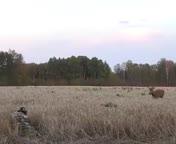
Benelli Endurance BEST ComforTech 3 Review: Precision Semi-Auto Rifle with 5-Round Double-Stack Magazine Table of Contents Benelli Endurance BE.S.T. • Overview Benelli Endurance BE.S.T. ComforTech 3 • Available Calibers and Barrel Options • Technical Specifications and Internal Guide System • Magazine System and Feeding Reliability • Comfortech 3 Recoil Reduction System • BE.S.T. Surface Treatment and Durability • Effective Range and Hunting Applications • Price and Market Position • Accessories, Muzzle Threads, and Customization • Pros and Cons Based on User Feedback • Why Hunters and Shooters Choose the Endurance BE.S.T. • Interesting Facts About the Rifle --- 🔍 Overview of the Benelli Endurance BE.S.T. ComforTech 3 The Benelli Endurance BE.S.T. ComforTech 3 is a premium semi-automatic hunting rifle designed for precision, reliability, and comfort. Manufactured in Italy, this rifle is built for demanding hunters and sport shooters who require consistent performance in harsh environments. It features Benelli’s proprietary BE.S.T. (Benelli Surface Treatment) coating for corrosion resistance, the advanced ComforTech 3 recoil reduction system, and a 5-round double-stack magazine that ensures smooth feeding—even with delicate bullet tips—thanks to its internal guide system. --- 🎯 Available Calibers and Barrel Options The Endurance BE.S.T. ComforTech 3 is available in several popular hunting calibers: • .308 Winchester • .30-06 Springfield • .300 Winchester Magnum • 9.3x62mm Barrel lengths vary by caliber: • 51 cm (.308 Win, .30-06) • 56 cm (9.3x62) • 61 cm (.300 Win Mag) All barrels are cold hammer-forged and cryogenically treated for improved accuracy and longevity. Muzzle threads are standard: M14x1 or M15x1, depending on caliber. --- 📊 Technical Specifications and Internal Guide System Feature Specification Action Semi-automatic, gas-operated Magazine 5-round double-stack, detachable Barrel Rifled, cryogenic, threaded Weight ~3.2–3.25 kg Receiver Aluminum alloy Stock Techno-polymer with AirTouch grip Recoil System ComforTech 3 + CombTech cheek pad Sights Fiber-optic front, adjustable rear Safety Manual safety The internal guide system ensures precise chambering and feeding, even with soft-point or polymer-tipped bullets, making it ideal for hunting sensitive game. --- 🔄 Magazine System and Feeding Reliability The 5-round double-stack magazine is a standout feature. Unlike traditional single-stack designs, this configuration allows for: • Faster cycling • Reduced jamming • Secure feeding of delicate tips Optional 10-round magazines are available for sport shooting applications. --- 🛡️ Comfortech 3 Recoil Reduction System Benelli’s ComforTech 3 system is engineered to reduce both vertical and horizontal recoil impulses. Combined with the CombTech cheek pad, it minimizes shooter fatigue and improves follow-up shot accuracy. This system uses: • Shock-absorbing inserts in the stock • Vibration-dampening cheek pad • Adjustable length of pull via recoil pads (thin, medium, thick) --- 🧪 BE.S.T. Surface Treatment and Durability The BE.S.T. coating is a diamond-like carbon finish applied via gas plasma deposition. It offers: • Superior corrosion resistance • Scratch and abrasion protection • Enhanced aesthetics Benelli claims the BE.S.T. treatment lasts longer than traditional bluing or Cerakote and is backed by a corrosion warranty. --- 📏 Effective Range and Hunting Applications Depending on caliber and optics, the Endurance BE.S.T. offers: • Effective range: 300–600 meters (.308 Win, .30-06) • Extended range: Up to 800+ meters (.300 Win Mag) Ideal Game Targets: • Deer, Roe Deer, Wild Boar – .308 Win, .30-06 • Moose, Elk, Bear – .300 Win Mag, 9.3x62 • Driven hunts and stalking – Semi-auto action allows fast follow-ups --- 💰 Price and Market Position The Benelli Endurance BE.S.T. ComforTech 3 is positioned as a premium semi-auto hunting rifle: • European MSRP: ~€2,000–€2,500 • US MSRP (if imported): ~$2,200–$2,800 • Ukraine/Russia retail: ~₴118,000–₴135,000 / ₽850,000 It competes with rifles like the Browning BAR MK3, Merkel SR1, and Sauer 303. --- 🧰 Accessories, Muzzle Threads, and Customization • Muzzle Devices: Compatible with suppressors, muzzle brakes, or flash hiders • Optics Mounting: Picatinny rail or proprietary mounts • Sling Swivels: Quick-detach points included • Stock Adjustments: Length of pull and drop can be customized • No chokes: As a rifled semi-auto, chokes are not applicable --- 👍 Pros and 👎 Cons Based on User Feedback Pros: • Excellent recoil management • Reliable feeding with all bullet types • Durable finish for harsh conditions • Smooth semi-auto cycling • High-end build quality Cons: • Premium price point • Heavier than bolt-action alternatives • Limited aftermarket parts compared to AR-style platforms --- 🧠 Why Hunters and Shooters Choose the Endurance BE.S.T. Hunters choose this rifle for its balance of speed, precision, and comfort. The semi-auto action allows quick follow-ups, while the ComforTech 3 system ensures minimal recoil. The BE.S.T. coating makes it ideal for wet, cold, and rugged environments. Sport shooters appreciate its accuracy, ergonomics, and feeding reliability, especially in dynamic shooting disciplines. --- 🤯 Interesting Facts About the Rifle • The BE.S.T. coating took 7 years of research to develop and is protected by international patents. • The rifle ships with adjustable spacers, sling swivels, oil bottle, and a full manual. • The CombTech cheek pad adapts to the shooter’s face shape, reducing impact and improving comfort. --- Final Thoughts The Benelli Endurance BE.S.T. ComforTech 3 is a top-tier semi-automatic hunting rifle built for serious shooters. With its advanced recoil system, precision feeding, and rugged finish, it’s engineered to perform in the toughest conditions.
Post: 25 September 19:59














































